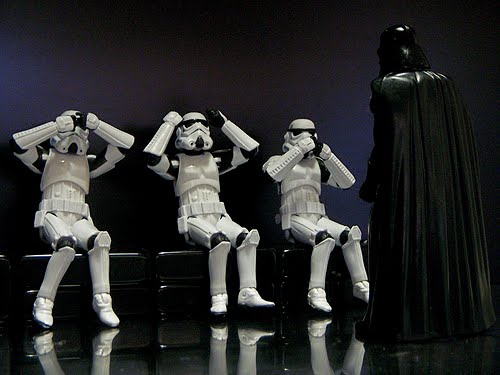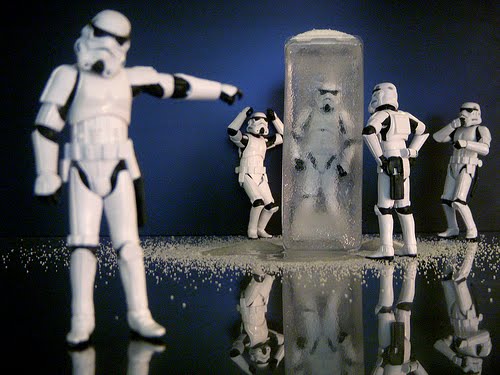What makes a story seem real? What gives it verisimilitude?
I'm trying out a new idea or perhaps just putting a twist on an old one. I'm not sure if you'll agree with me and if you don't that's okay! I would be interested in what you think.
A Theory of Story
Stories are nothing new. I think in our earliest days as a species we were already telling ourselves stories, stories that helped us understand the world around us. But certain stories were better than others at doing this. Over time, one can imagine that the stories that were better at helping people succeed in the world were favored. They spread.
There are two things here: First, some sort of theory, some sort of idea about how the world works, Second, there is what is actually out there in the world.
And there are levels here. In real life I tell myself stories about molecules and atoms and subatomic particles and I expect that out there in the world there are things that these ideas, these theories, more or less refer to. The theory has some ‘traction’ on what is out there, on whatever it is that impinges on my senses.
These two things, these two levels, let's call them A and B.
A) What is
When we write a fictional story we take one step back. We’re no longer talking about an objective reality. We are the gods of our stories, creating worlds from whole cloth. As creators we get to invent whatever we want.
Broadly interpreted, what we create is what we call the setting of the story. What is the physics of this world? What is the politics like? What sort of biological systems exist? Do gods exist? Does magic exist? If so, how does it work? And so on.
B) Human (or other) machinations
Then there is what I’ve called some sort of theory of the world, some sort of story--or stories--that the characters tell themselves about what is true, about what are the best ways of getting what they want.
My point is that these two constructions (A & B) are related, and that things will turn out for a character better or worse depending upon how well they hook into each other.
The Idea
So here’s my idea. This is an oversimplification, but for every major character, they will have ideas about what the story world is like. Now, you will have made the story world--the setting--in a certain way so there are only two possibilities: your character will be right about how the world is or they will be wrong about how the world is.
Let's call "alignment" the degree to which how the character sees the world aligns with or agrees with how the world really is. I think that a character's degree of alignment is relevant to the kind of character they are.
If there is a high degree of alignment, if how the character sees the world more or less matches up with the character's ideas of how best to get on in the world, then chances are the character is either the protagonist or someone helpful associated with the protagonist such as his sidekick or his mentor.
On the other hand, if there is a low degree of alignment, if the story they tell themselves about the best way to get on in the world, is at variance with how the world really is then chances are the character is either the antagonist or someone associated with the them such as their sidekick, mentor, minion, and so on.
Here's how this idea, or these ideas, relate to the notion of verisimilitude: A character's degree of alignment needs to be matched up to the kind of character they are (for example, protagonist or antagonist) in order for the story to feel real, or at least, in order for the story to feel satisfying. [1]
In what follows I try to unpack this idea. [2]
Luke Skywalker
For example, Luke Skywalker. He is a young man working on his aunt and uncle’s moisture farm, but he is a skilled pilot and wants nothing more than to head offworld, fly fast planes, and have adventures.
In a way, that is every teenager, ever.
And then something unexpected happens (The Call to Adventure) and Luke is asked to go on an adventure to help the rebel alliance and save a beautiful princess. This is everything Luke has ever wanted… And he says “No.” Why? Luke says he has a duty to his aunt and uncle and he can’t just leave them to run the farm on their own.
And this is consistent (or so I would argue) with Luke’s character. Yes, he wants to go off on an adventure, but then why hasn’t he? He could have left and gone to school even though his uncle and aunt didn’t want him to. He stayed because he was grateful to them and because he loved them.
Let’s break this down into (A) and (B).
B: The parts that are important here are Luke’s attitude toward his aunt and uncle, his belief that duty matters--this shows how he feels toward those close to him and it shows that he loves his family. He is loyal. He puts the needs of others above his wants.
A: Also, we get a peek at the political world of the story, at that part of the setting. There is an Empire (bad, repressive, brutal killers) and a resistance (fighting for life and liberty). And, of course, given what we know of what kind of character Luke is, we aren’t surprised that he sympathizes with the resistance BUT refuses to join because he recognizes his duty to his aunt and uncle.
So I would say that Luke was a good character in the sense that we are given a certain setting (the external world filled with rebels and stormtroopers) and a certain kind of character (loyal, courageous, a bit impatient) and how that character acts in that world makes sense. We have a character with a good goal and a close fit with reality.
More Examples
The Evil Queen from Snow White
As I mentioned, not all characters, though, have a close alignment. An example of a character with a distant alignment and a bad goal is the Evil Queen from Snow White and the Seven Dwarves.
I think this is often true for antagonists; that is, they often misrepresent the world to themselves. Why? It often happens that a certain way the world is radically disappoints them. Often this disappointment is due to what we might consider a character defect.
The Evil Queen, for example, has a magic mirror that always tells her the truth. So here we have (A), how the story world really is. And the queen, who we are told is vain, asks the mirror who is the fairest in the land, and one day she is told that it’s not her. Instead, it’s her step daughter.
It seems to me that we all realize that people age and beauty doesn’t last forever. At a certain point the queen had to know she wouldn’t be the fairest in the land. But, what’s her reaction? Does she react in a way consistent with this truth, with reality? Not so much. She tries to kill Snow White so she will, once again, be the fairest in the land.
I think this is very effective at setting the queen up as an evil character. I mean, what is her long term plan? As she continues to age her beauty will continue to fade so what is she going to do, kill all the pretty young women in the land until she’s the only female left? That shows she doesn't care about the people in her community.
Also, and as you know, this is another mark of an antagonist: her goal is a bad long term goal. As I mentioned, her beauty will inevitably fade but, more than that, putting her entire focus on being the most beautiful is a selfish goal. She isn't trying to accomplish anything that will help her community or the broader world.
But the Queen's behavior (exaggerated though it is) is believable, it’s plausible, because she is vain and intentionally not thinking things through because that would be traumatic for her, it would uncover certain errors in how she understands the world around her. (I’m not saying that most of us haven’t had a moment of vanity here and there, but hopefully none of us carried things quite this far! ;)
Cypher from The Matrix
Let’s look at one more character: Cypher from The Matrix. Like the Evil Queen, Cypher wanted to deny reality. What he wanted to be true and what was true were at variance, and since he couldn’t change reality, he decided he would change his beliefs about reality, he would rather accept a lie as true than accept the bitter dystopian reality that the world actually was. And so he betrayed those who had been his friends to their enemies and exchanged the bitter truth for a pleasant lie (although it is hinted that Cypher’s actual reward for his treachery was death).







